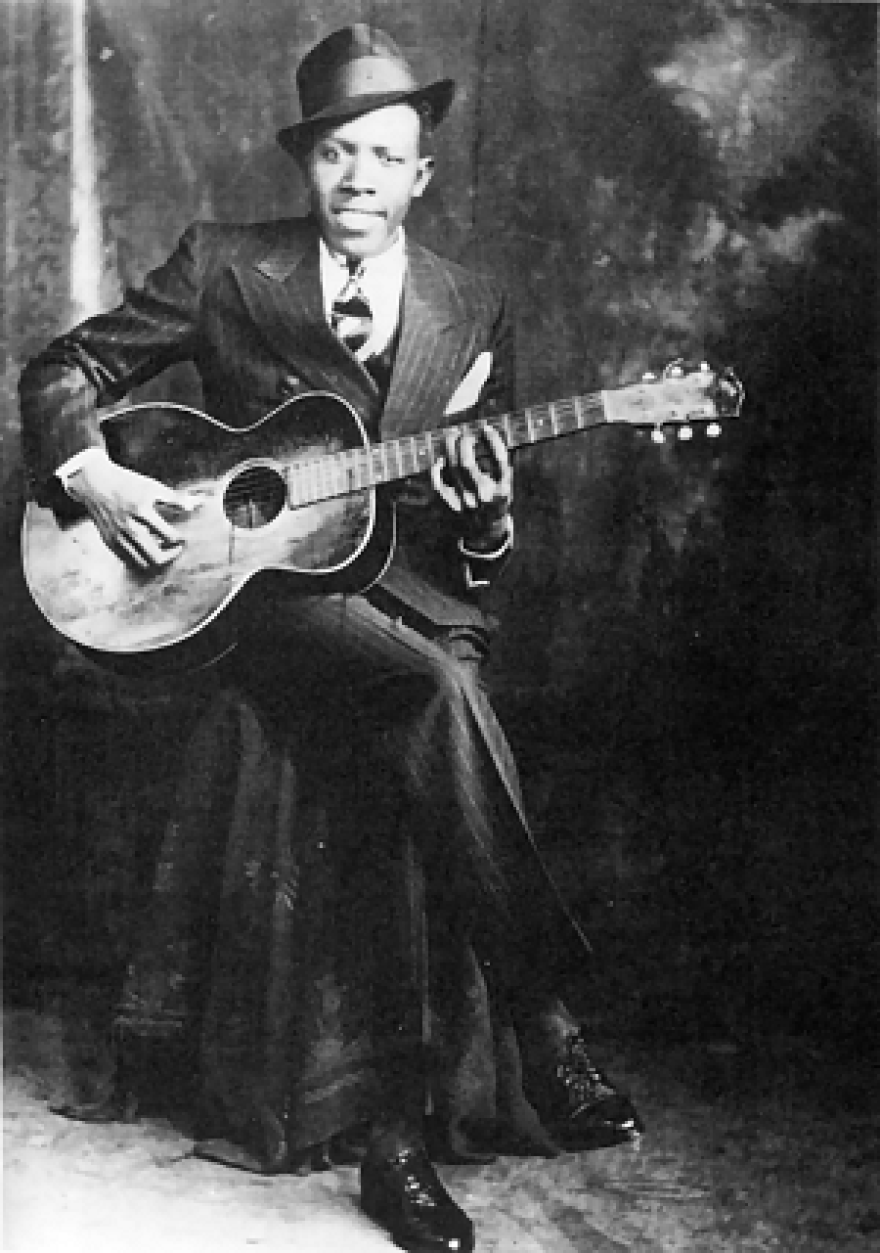Eric Clapton called Robert Johnson "the most important blues singer who ever lived."
Saying that Johnson was a superlative guitar player, impassioned singer and masterful lyricist seems barely adequate to convey the importance of the work he accomplished in his 27 years.
Many of his songs became not only blues standards but would be a huge influence on rock music. Among his best-known songs are “Sweet Home Chicago”, “Walkin’ Blues” and “Crossroads Blues."
Although he traveled around most of the eastern US, and was a well-liked performer, Robert Johnson had little influence during his own lifetime. It wasn’t until the early 1960s, when his original recordings were re-issued that he began to receive his due. His “Stop Breaking Down” was released in 1937, one of only 29 titles he ever recorded.
John Lee “Sonny Boy” Williamson was a contemporary of Robert Johnson who is known as an early innovator of blues harmonica, one of the first to turn it into a viable lead instrument. He perfected the “call and response” style of harmonica, where he alternated vocal lines with harp fills. Many of his recordings have become blues standards including “Good Morning Schoolgirl”, “Sugar Mama Blues” and “Bluebird Blues”. He recorded “Stop Breaking Down” in 1945 with Big Maceo on piano and Tampa Red on guitar.
When The Rolling Stones first got together in 1962, their goal was to be the best blues band in London. They steeped themselves in music of Chuck Berry, Bo Diddley and Muddy Waters, and Robert Johnson. Keith Richards wrote in 1990 about hearing a Robert Johnson record for the first time at the home of Brian Jones: “When I first heard it, I said to Brian, Who's that? Robert Johnson, he said. Yeah, but who's the other guy playing with him? Because I was hearing two guitars, and it took me a long time to realize he was actually doing it all by himself. The guitar playing - it was almost like listening to Bach.”
Their early albums were full of American blues songs, but by the mid 60’s the Stones were recording their own material exclusively, with some notable exceptions including “Love in Vain” in 1969 and “Stop Breaking Down” in 1972. Here’s a 1994 video of The Rolling Stones performing “Stop Breaking Down” with Robert Cray playing lead guitar:http://youtu.be/S3Mywsl_5yM
As the Rolling Stones, Cream and Led Zeppelin brought Robert Johnson’s music to listeners of the 60’s and 70’s, The White Stripes introduced Johnson’s music to an entirely new generation. The Lo-fi duo combined blues, rock and punk and were part of the resurgence of “garage rock” in the late 90’s, winning 3 Grammy awards along the way for Best Alternative Music Album. They released “Stop Breaking Down” on their 1999 debut.
Here are the complete versions of “Stop Breaking Down” tracked through time:




